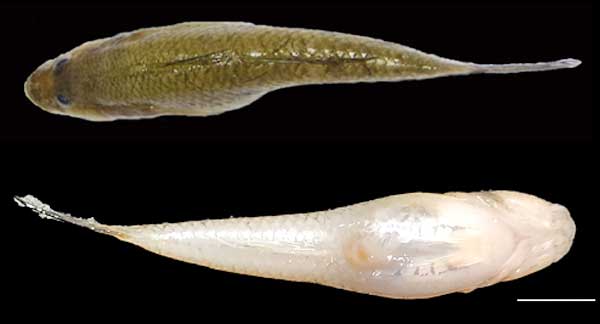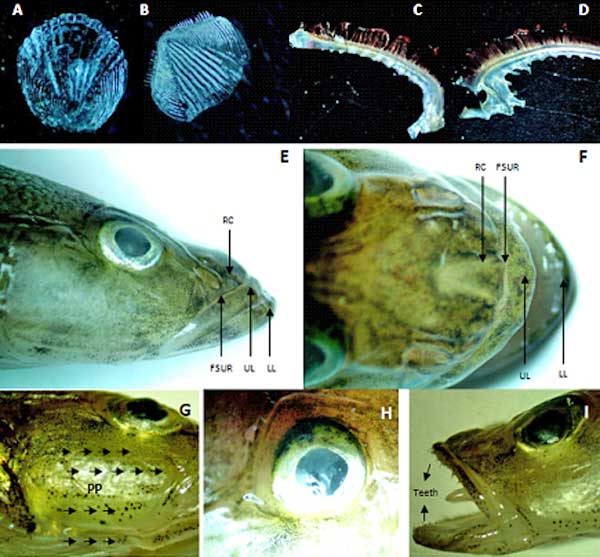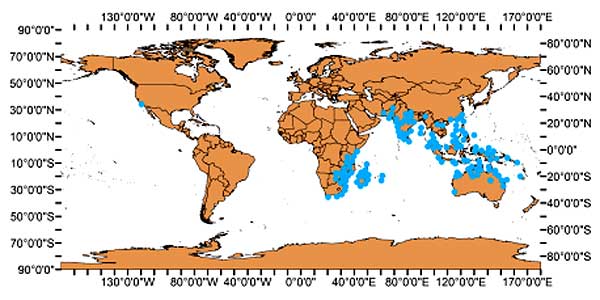
Introduction:
The species Glossogobius giuris (Common name (English) ‘Tank Goby’, locally known as ‘Bele’ (in Bangla)) is widely distributed in the freshwater and estuaries of Bangladesh, India, Pakistan, Myanmar and Far East (Doha, 1974). This species generally inhabits clear to turbid freshwater to estuarine habitats in rivers and streams with sand, gravel or rock substrate (Allen 1991). It is also found in shallow sandy streams as well as floodplain lagoons and in the lake. G. giuris is a benthopelagic and amphidromous species that is mainly found in estuaries and freshwater river systems that extend well inland, but it is also found in marine habitats. G. giuris is also known to be a host for a variety of parasites (Arthur and Ahmed 2002).
Gobiidae is a family of bony fish in the order Gobiiformes, one of the largest fish families which are sometimes referred to as the “true gobies” (Chakrabarty, 2012). One of the Small Indigenous Species (SIS) of fish, Glossogobius giuris, has a special preference in the diet of South Asian people because of its unique taste, low fat and high protein content (Islam and Joadder 2005). So far there are very few information is available about the taxonomy, marketing and distribution. However, an attempt has been made to present a short discussion of the taxonomy, marketing channel and world distribution of Glossogobius giuris to the present study.
Taxonomic features:
Counts based on 761 specimens (Collected during my research work), having 4.5-17.3 cm in TL; Dorsal fin: D1. VI, D2. I/ 9; pectoral: P1. 17–18; pelvic: P2. I/5; anal: A. I/8-9; and caudal: C. 17-18; Scales in lateral series 29-35. Scale rows above lateral line 4 and below lateral line 4. Gill rakers on lower limbs 8-9, upper limbs 2-3. Body elongated, compressed. Position of mouth superior; head and snout flattened. Mouth relatively large, slightly oblique, lower jaw prominent, the outer row of teeth in upper jaw conical, somewhat enlarged, stout, followed by 2-3 rows of smaller, depressible teeth; teeth in an outer row on lower jaw conical, somewhat enlarged, stout, followed by 2-3 rows of smaller, depressible teeth; tongue deeply emarginated; sensory papillae on the cheek below the eye in multiple rows. Scales ctenoid on the body, cycloid on breast and pectoral fin base (Figure: 2).

Diagnosis
Head flattened, lower jaw projecting; the body is pale without longitudinal lines. Dorsal fins with small spots forming longitudinal stripes. Pelvic fins jointed but attached to the body only from their anterior part. The mouth is terminal. The lower jaw remains slightly projected beyond the upper jaw. The upper jaw, as compared to the lower jaw, is highly protrusive. The upper lip (UL) and the lower lip (LL) covering the upper jaw and the lower jaw respectively are thick and prominent. The epithelia of the UL, the LL, the rostral cap (RC) and the fold of skin (FSUR) are covered by a mosaic of irregularly polygonal epithelial cells. The oral cavity of G. giuris is prominent in the strong dentition of their jaws, armoured by several papilliform teeth (Figure 2).
Colour
The body is brownish yellow with few dark and rounded spots on its sides. Dorsal fins are light with brownish spots. Pelvic fins are grey. Pectorals and caudal fin are grey and often hyaline.
Sex attributes
Glossogobius giuris exhibits clear sexual dimorphism, the male was with straight, thin and pointed genital papilla while females were with short fleshy and circular genital papilla. A total of 761 specimens were collected during the one year study period. 352 male and 409 females were identified on the basis of size and shape of the genital papilla. Percentage of the male and female sex was 46% and 54% respectively with having sex ratio 1:1.17 (Male:Female).
Marketing Channel
The fish marketing systems in Bangladesh are traditional, complex, and less competitive. Large numbers of intermediaries are involved in the fish marketing system of Bangladesh. A traditional and simple marketing channel was found in marketing of Glossogobius giuris. It reaches to the local consumer from fishermen through aratdar, local market and local retailer. Where the price of fish varies between 320-400 Tk/Kg depending on size and season, as the availability of the fishes is not same all over the season. Fisherman collect fishes from the lake, river and pond and fishes are transported to different parts of the country through a common marketing channel (Figure: 3). Consumers have to depend on an effective fish marketing system through which fishes will be available within a short period in fresh state.

Global distribution
This species is found in coastal regions and the lower reaches of rivers throughout the Indian subcontinent eastwards to the Indochinese peninsula and southwards to Sundaic Southeast Asia.

Native: Bangladesh; India; Pakistan; Sri Lanka; Nepal; Myanmar; China; Japan; Australia; Brunei Darussalam; Cambodia; French Polynesia; Indonesia; Iran, Kenya; Malawi; Malaysia; Micronesia; Mozambique; Palau; Papua New Guinea; Philippines; Singapore; South Africa; Taiwan; Tanzania; Thailand; and Viet Nam (Larson et al., 2016).
Conclusion
It can be concluded that the study provides comprehensive information regarding taxonomic, marketing channel and world distribution of Glossogobius giuris from Chittagong, Bangladesh. This basic information will be helpful for evaluating the commercial potentialities of its stock and management of its fishery.
References
Allen GR (1991) Field guide to the freshwater fishes of New Guinea. Christensen Research Institute, Madang, Papua New Guinea. 268 pp.
Arthur JR and Ahmed ATA (2002) Checklist of the parasites of fishes of Bangladesh. FAO Fisheries Technical Paper 369/1. Food and Agriculture Organization. 81 pp.
Chakrabarty P (2012) The Biology of Gobies. Copeia. 2012(2): 359-360. DOI: doi.org/10.1643/OT-11-184.1.
Doha S (1974) Investigation into the biology of the Gobi, Glossogobius giuris (Hamilton-Buchanan). Bangladesh Journal of Zoology. 2: 95-106.
GBIF (2019) Glossogobius giuris (Hamilton, 1822). Retrieved on 5 July 2019 from https://www.gbif.org/species/2378087.
Islam MN and Joadder MAR (2005) Seasonal variation of the proximate composition of freshwater Gobi, Glossogobius giuris (Hamilton) from the River Padma. Pakistan Journal of Biological Sciences. 8(4): 532-536.
Larson H, Britz R, Sparks JS, Lumbantobing D, Brown C, de Alwis Goonatilake S, Fernado M and Kotagama O (2019) Glossogobius giuris. The IUCN Red List of Threatened Species 2019: e.T166533A123379264. https://dx.doi.org/10.2305/IUCN.UK.2019-3.RLTS.T166533A123379264.en. Downloaded on 02 May 2020.
N.B.
All photographs were taken with the help of stereo microscope (Optika SZM-2) and Camera Canon 700D) by the author.
Visited 2,089 times, 1 visits today | Have any fisheries relevant question?
